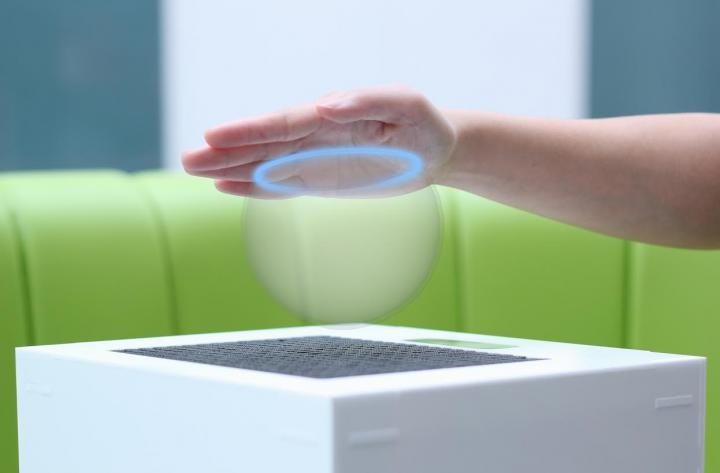Technology has changed rapidly over the last few years with touch feedback, known as haptics, being used in entertainment, rehabilitation and even surgical training. New research, using ultrasound, has developed an invisible 3D haptic shape that can be seen and felt.
The research, led by Dr Ben Long and colleagues Professor Sriram Subramanian, Sue Ann Seah and Tom Carter from the University of Bristol’s Department of Computer Science, could change the way 3D shapes are used. The new technology could enable surgeons to explore a CT scan by enabling them to feel a disease, such as a tumour, using haptic feedback.
The method uses ultrasound, which is focussed onto hands above the device and that can be felt. By focussing complex patterns of ultrasound, the air disturbances can be seen as floating 3D shapes. Visually, the researchers have demonstrated the ultrasound patterns by directing the device at a thin layer of oil so that the depressions in the surface can be seen as spots when lit by a lamp.
The system generates an invisible 3D shape that can be added to 3D displays to create something that can be seen and felt. The research team has also shown that users can match a picture of a 3D shape to the shape created by the system.
Dr Ben Long, Research Assistant from the Bristol Interaction and Graphics (BIG) group in the Department of Computer Science, said: “Touchable holograms, immersive virtual reality that you can feel and complex touchable controls in free space, are all possible ways of using this system.
“In the future, people could feel holograms of objects that would not otherwise be touchable, such as feeling the differences between materials in a CT scan or understanding the shapes of artefacts in a museum.
Source: Science daily
N.H.Khider

